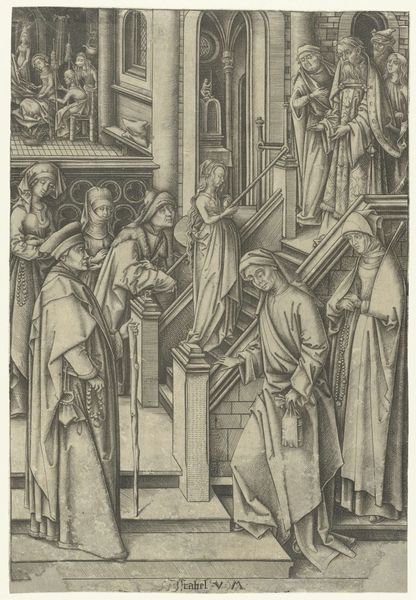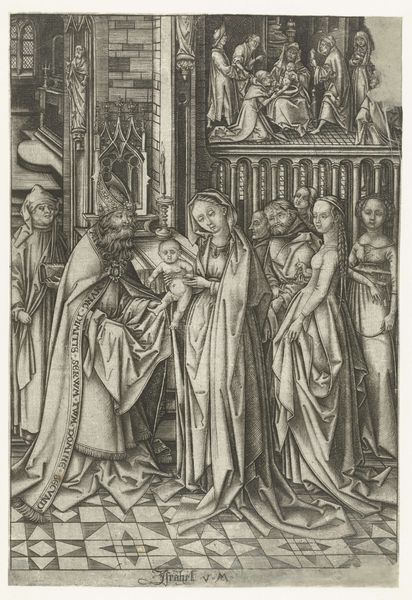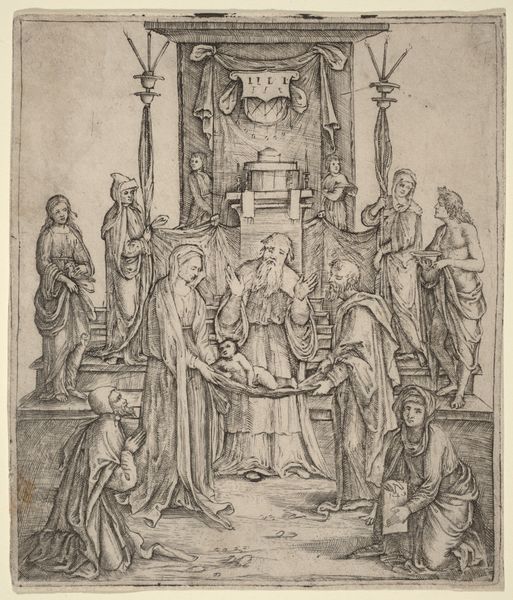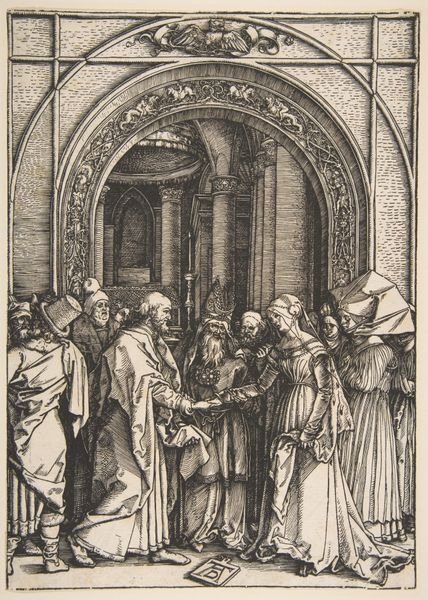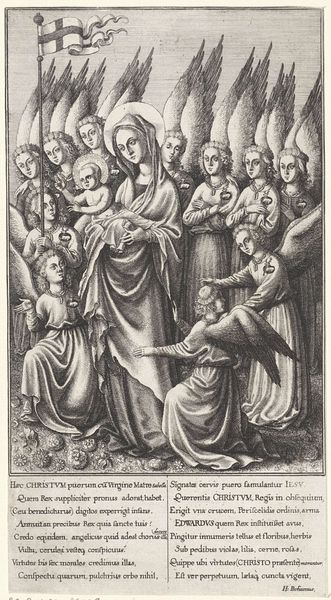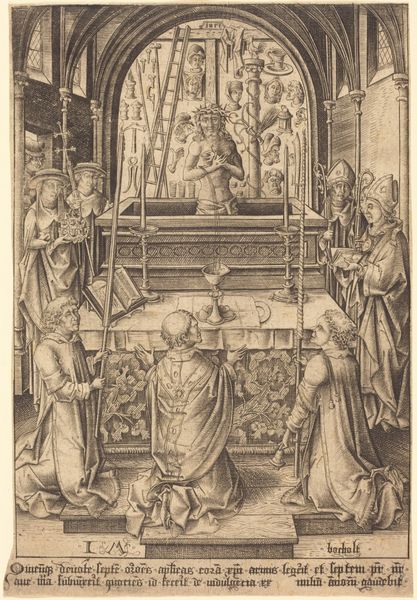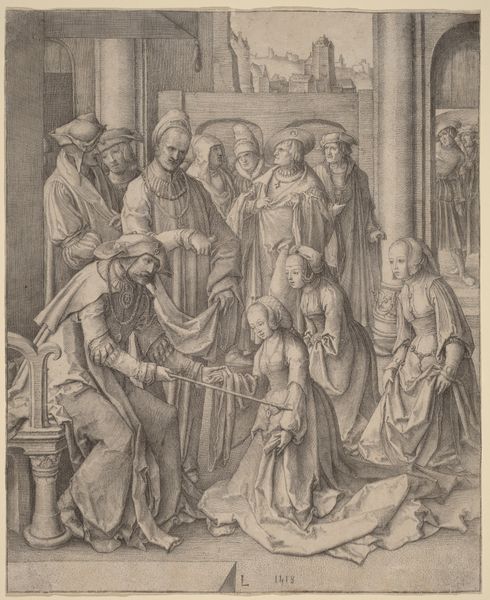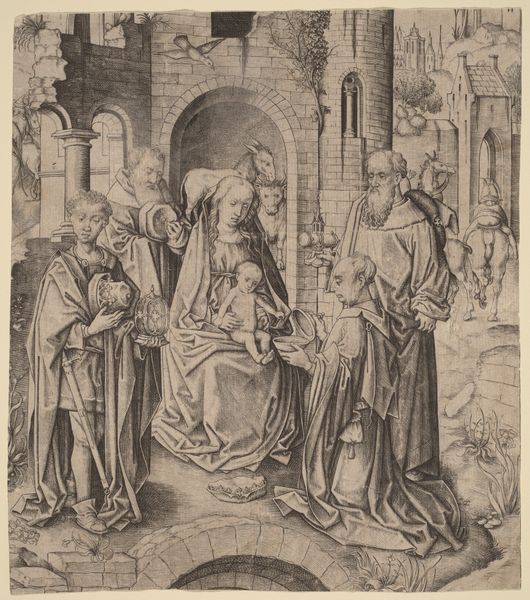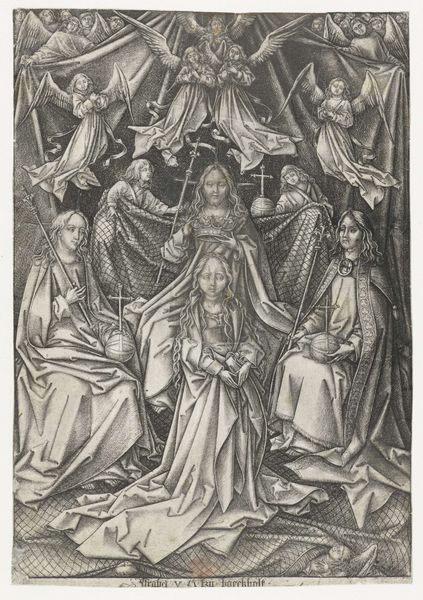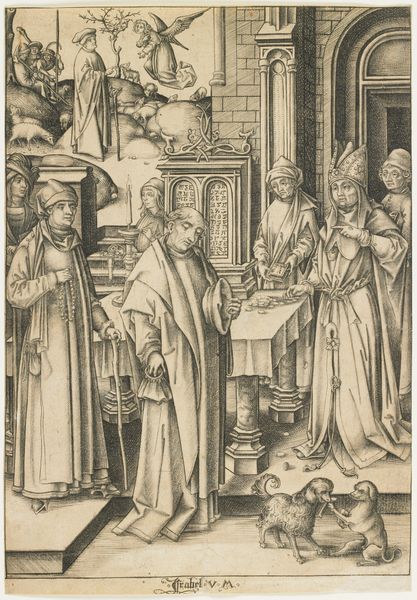
print, engraving
#
narrative-art
# print
#
figuration
#
history-painting
#
northern-renaissance
#
engraving
Dimensions: height 269 mm, width 181 mm
Copyright: Rijks Museum: Open Domain
Editor: Here we have "The Marriage of the Virgin" by Israhel van Meckenem, made sometime between 1455 and 1503. It's currently held in the Rijksmuseum. The detail achieved in this engraving is remarkable; it must have taken so much time and labor. What stands out to you about the process of its creation? Curator: As a print, this work immediately prompts questions about its accessibility and dissemination. Engravings like this weren't just aesthetic objects. They were part of a wider system of production and exchange. How would this print have circulated? Who would have been able to access it and what does it mean in this social context? Editor: That makes me consider who owned these prints? Were they like cheap reproductions or something more valuable? Curator: Think about the cost of the materials. The copperplate itself, the labor of the engraver… this wouldn't be something *everyone* could afford. Consider how the printing press itself revolutionized knowledge, making it less reliant on monastic orders or elites to hand-copy scripture. Also look closely – the printmaker left his mark and signature; that suggests awareness of himself as an artist. Editor: It's a craft and an art, all wrapped together, with social implications for religion! Thinking about that labor and the printing process definitely changes how I see this. Curator: Exactly! We're dealing with a convergence of technique, intention, and socio-economic factors. Consider this not just as art, but material culture. Editor: I hadn’t thought of it in those terms. Thanks, I appreciate it!
Comments
No comments
Be the first to comment and join the conversation on the ultimate creative platform.
